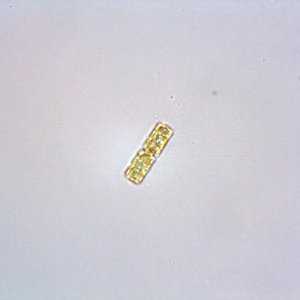Aug 04, 2020
Preparing phytoplankton samples for elemental carbon and nitrogen analysis
- Jana Hinners1,
- Sinead Collins1
- 1University of Edinburgh

Protocol Citation: Jana Hinners, Sinead Collins 2020. Preparing phytoplankton samples for elemental carbon and nitrogen analysis. protocols.io https://dx.doi.org/10.17504/protocols.io.8epv51jk5l1b/v1
License: This is an open access protocol distributed under the terms of the Creative Commons Attribution License, which permits unrestricted use, distribution, and reproduction in any medium, provided the original author and source are credited
Protocol status: Working
We use this protocol and it's working
Created: December 12, 2019
Last Modified: August 04, 2020
Protocol Integer ID: 30929
Keywords: POC PON, elemental analysis, diatoms
Abstract
Protocol for the preparation of phytoplankton samples for elemental carbon and nitrogen analyses.
Attachments
Materials
MATERIALS
Distilled Water
Tissue Culture Flask, 50ml, 10/CsBio Basic Inc.Catalog #TCF70-50.SIZE.1PK
Hydrochloric acidMerck MilliporeSigma (Sigma-Aldrich)Catalog #H1758
6-well plateCorning
Vacuum Manifold Filtration Unit Merck Millipore (EMD Millipore)Catalog #MSVMHTS00 or equivalent
Whatman GFF filters 25mmMerck MilliporeSigma (Sigma-Aldrich)Catalog #Z242489
Preparing GFF filters
Preparing GFF filters
2d
2d
Wrap up to 20 Whatman GFF filters in aluminium foil and precombust them for 6 hours at 450degrees C, store filters airtight afterwards
Weigh precombusted filters and store labelled and individually (e.g. in 6-well microtitre plates)
Preparing phytoplankton cultures
Preparing phytoplankton cultures
5d
5d
Grow 45 mL phytoplankton cultures in 50 mL flasks until they reach mid-exponential phase, culture are dense enough when some colour is visible
Applying samples onto filters
Applying samples onto filters
1d
1d
1 mL used of each sample used for cell counting (e.g. with fluorescence plate reader/FlowCam/FlowCytometry?Microscopy)
Use a vacuum filtration unit to apply the phytoplankton samples onto the GFF filters
From the remaining 44 mL per sample, 20 mL each used for 2 replicate filters
Apply the ample onto filter using a pipette, carefully check volume
Wash each the edge of the filter unit and the filter with 10mL dest. water
Filters with biomass can be stored again in the 6-well plates,
Let filters dry with loose lid overnight
Preparation of filters for elemental analysis
Preparation of filters for elemental analysis
5d
5d
Dry filters at 40 degrees C for 2-3 days
Weigh all dried filters again and calculate the net weight of the dry biomass for each filter
For work with an elemental analyzer that measures total carbon content, the inorganic carbon content has to be removed: (this can take place in the 6-well plates
Soak filters with 200uL dest. water, then apply 100uL 2M HCl onto each filter to remove any inorganic carbon from the filters
Let filters dry overnight
Filters are now ready for elemental analysis

